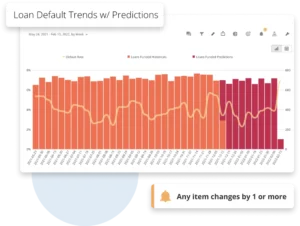
Social Media Community Management: What You Need to Know
Understanding the Role of a Community Manager
A community manager serves as the bridge between a brand and its audience, responsible for fostering relationships, managing communications, and driving community engagement. This entails understanding the brand’s voice, addressing feedback, and creating value-driven interactions within the community.
Best Practices for Community Management on Social Media
Effective community management on social media involves implementing best practices such as active listening, timely response to queries and concerns, providing valuable content, and fostering a positive community culture.
Effective Strategies for Managing Social Media Communities
To effectively manage social media communities, it’s essential to create a strategic approach, leveraging tools and resources to monitor, engage, and nurture the community across various social platforms.
Strategies for Effective Community Management
Utilizing Social Listening for Community Management
Social listening is a powerful tool for community management, providing insights into audience sentiments, identifying trends, and uncovering opportunities to enhance community experiences and interactions.
Tools for Managing Social Media Communities
Utilizing community management tools can streamline processes, automate tasks, and enhance community interactions, allowing for more efficient and effective management of social media communities.
Engaging and Growing Your Social Media Community
Engagement is key to growing a social media community. By creating relevant content, initiating conversations, hosting events, and recognizing community members, you can foster a thriving and engaged community.
Building a Strong Community Management Plan
Creating a Community Management Strategy
An effective community management strategy aligns with business objectives, integrates audience insights, and outlines clear guidelines for managing interactions, content creation, and community growth.
Implementing Best Practices for Community Management
Implementing best practices involves maintaining transparency, fostering meaningful connections, and establishing guidelines for community behavior, creating a safe and inclusive environment for all members.
Ways to Promote Community Engagement
Promoting community engagement can be achieved through interactive content, social media campaigns, dedicated community forums, and actively seeking feedback to tailor strategies to community needs.
Optimizing Social Media Platforms for Community Management
Managing Community Efforts Across Different Social Media Accounts
Strategically managing community efforts across various social media platforms requires understanding platform-specific features, tailored content creation, and leveraging insights to foster meaningful interactions across each platform.
Utilizing Social Media Marketing Strategies for Community Building
Social media marketing strategies can be leveraged to build and grow a community by targeting relevant audiences, promoting community-centric content, and driving engagement through compelling storytelling and interactive experiences.
Identifying Social Marketing Leaders for Community Management
Identifying and engaging with influential social media users and leaders within the community can strengthen brand advocacy, enhance community reach, and drive meaningful conversations, fostering a sense of community leadership and guidance.
The Ultimate Guide to Social Community Management
Growing Your Social Media Community with Proven Strategies
Sustainable community growth relies on proven strategies such as identifying and nurturing brand advocates, providing value-driven content, and creating a collective sense of belonging within the community.
Utilizing the Best Social Media Management Tools
Leveraging top social media management tools empowers community managers to streamline processes, analyze community insights, and monitor community sentiment, enabling more effective and efficient community management.
Key Steps to Build and Sustain a Successful Community on Social Media
To build and sustain a successful community on social media, it’s essential to continuously engage and listen to the community, adapt strategies based on insights, and foster a sense of belonging and ownership among community members, creating a vibrant and loyal community.
Social media manager tips: 8 pointers for better social community management
1. Plan, plan, plan
Consistency is key in your social media community management strategy. Plan ahead so you can have content coming out reliably at all times, and you can clearly see what needs to be accomplished.
Consistency will help keep your posts relevant in terms of your audience’s news feeds and maintain a healthy online presence to keep their attention.

Planning ahead is crucial to your success as a social media community manager. All your content, whether it’s the posts you schedule, ongoing campaigns, contests, etc., should be arranged in a detailed content calendar so you can take a clear, overall view of your work.
You’ll also want to do everything you can to avoid publishing errors, so set up roles and approval flows for your team as well. The content you have going out should be checked and double-checked, with only key team members being able to publish.
2. Work on your communication skills
As a social media community manager, you’ll be in a customer-facing role, and that comes with a lot of pressure. There are a lot of ways that things can go wrong, and many of them won’t be your fault. Whatever the case, it’s important that you’re able to stay calm under pressure and keep it professional.
It’s important to remember that every time you publish a post, retweet, or reply to a comment, you represent not just yourself, but your company in a public space.

Therefore, you will need to be able to take on that pressure to stay diplomatic and customer-oriented in your communications.
A great way to prevent crises ahead of time is to monitor conversations around your brand and topics related to it. This social media listening will give you the heads up that there might be a problem and will help you monitor the sentiment around your brand so that nothing catches you by surprise.
3. Cultivate a brand personality
You may need to stay professional and not insult your audience, but it’s equally important that your brand has a coherent and recognizable identity in its community interaction.
This helps your audience feel like they’re talking to a person and will go a long way in helping to nurture engagement and brand loyalty.

Some of the best social media community management examples are brands that have put a real effort into developing an interesting and unique personality.
Chipotle’s TikTok channel serves as a prime example of a brand that has excelled on the platform. They’ve achieved this success by crafting authentic and genuine content that deeply resonates with TikTok users. Through their engaging videos, Chipotle offers a behind-the-scenes glimpse, featuring real employees and providing transparent insights into their food preparation process. For example, this video takes viewers behind the scenes of the first day of training as an employee at Chipotle. This strategy has managed to bring in over 2 million TikTok followers and 52 million likes.
4. Define success and set metrics to track it
Tracking success for social media community management can be tricky. Traditionally, ROI is often tracked through clicks and conversions, but your results from social media won’t be as clear. It can be difficult to determine how your efforts have contributed to sales and leads directly.
Instead, it’s better to determine how you define your own success, depending on your goals. Track what kind of content your audience engages with, what gets them talking or falls flat, and what brings in more followers.

As much of the work of community management will be as a point of contact for customer queries and product problems, another good set of metrics to keep track of is response time, resolution time, and customer satisfaction.
Tracking these will help you determine how well your team is performing. Calculating social media ROI helps measure the effectiveness of your efforts in building and engaging with your brand’s online community, ensuring your strategies align with the overall business objectives.
5. Include your audience in the conversation
Social media is all about interaction. So while you want to be creating and publishing the best content you can, sometimes even better content will come from another source: your audience.
This is user-generated content, or UGC.
It’s powerful because it’s authentic, and reflects what your audiences think about your brand. It allows your audience to share their experiences, positive or negative, and drives the conversation forward in ways that you won’t be able to do by just churning out content into the ether.
It is also an excellent way for you to engage with and get closer to your audiences, making your brand feel more personal and approachable.

UGC can be small things, like posts or tweets mentioning your brand, user reviews, all the way up to campaigns and contributor blogs.
One example of this is Kim Kardashian’s SKIMS brand on TikTok. SKIMS’ TikTok content predominantly comprises UGC contributed by creators and consumers from diverse backgrounds and body sizes, beautifully showcasing the brand’s commitment to inclusivity. They also make sure to credit the creator in the videos featured on their page; here’s influencer Alexa Jay in their Outdoor Rhinestone Mid Thigh Onesie.
Leveraging UGC in your marketing strategy has become increasingly vital for brands in today’s digital landscape. When customers share their personal experiences about your brand, it holds immense value as it serves as authentic, relatable, and trustworthy content.
6. Collect and use data
As a social media community manager, you’re in closer contact with your audiences than anyone else.
You see on a daily basis how they respond to your content, what drives engagement, what does not, and what issues and queries they have — all in real-time.
This skill set makes you an invaluable source of information for your company about customers and prospects.
A good community manager stays on top of the challenges and opportunities facing their brand to constantly improve their performance, but your value goes far beyond improving your own performance.

Through your close contact with your audience, you’ll have insights that others won’t have access to. Don’t let all that data go to waste — collect actionable feedback and share it with other departments.
A great way to do this is to label incoming queries and group them by the topics or issues customers are bringing to your attention. This will help you pinpoint their difficulties and pain points, and allow you to work to improve the way your brand responds to their needs.
The value of this data cannot be understated – you’ll end up with happier, more loyal customers, as well as more easily converted leads.
7. Be flexible with your time
Fortunately or unfortunately, the job of a social media manager is not limited to strict 9-to-5 office hours.
This can be a double-edged sword.
On the one hand, it gives you a certain level of flexibility in your work hours. But on the other hand, it means that it’s very easy to feel like you’re constantly on call.

Social media never stops, and you may feel like you should always be watching to catch a problem immediately. After all, there have been times in the past where social media crises spiraled out of control because the offending party wasn’t online to mitigate disaster.
On the bright side, this also means that if you follow tip #1 and keep organized with plenty of content scheduled and ready to go out, you can structure more of your time the way you want it.
But there’s another way to buy more free time, even while maintaining a consistent online presence.
8. Be tech-savvy
How are you supposed to keep an eye on your social media every day of the week without staring at your computer at all hours? The answer is two parts, but simple: Go mobile, and provide yourself and your team with the tools you need to save time.
A social media community manager’s job isn’t your average desk job. Instead of a routine 9-to-5 schedule, you’ll need to be on hand to post in-the-moment Instagram Stories, write newsflashes at a moment’s notice, whether you’re in the office or on the move.

Keep up with this pace by embracing mobile: You’ll be able to handle interactions on the fly and avoid building up a backlog of work that would distract you from your other responsibilities.
But handling your social media community management on a platform-by-platform basis can end up being overwhelming, even on mobile. Being tech-savvy doesn’t mean juggling multiple applications; in fact, it should be the opposite: Simplify! Go beyond native tools.
Get your team a tool that allows you to consolidate all your disparate social media data into one platform.
The takeaway
The role of a social media community manager can seem daunting, but the key takeaways here are:
- Get organized with the tools you and your team really need with defined metrics and a robust content calendar.
- Cultivate a brand personality to nurture your community. Get them involved with UGC.
- Collect the vast and granular data right at your fingertips as a social media community manager and put it to use. Your team and community will thank you for your insights!



